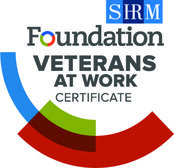The Power of No
After what can only be described as a waffling phone call earlier this week with a potential client, it made me want to issue this PSA:Saying “no” to an opportunity, a service, a contract, a teammate, or even a prospective employee, is one of the best gifts you can give.
When you concretely say “no,” you are valuing the other person’s time and energy. Whether that’s during recruiting, contract negotiation, or anything in between, it’s the right thing to do. They no longer have to put you on the follow up list, they no longer will spend mental energy trying to figure out where they stand in the process. They are empowered to move on and spend their energy on other opportunities. THIS IS A GIFT to all parties.
Too many times people are scared to commit to an answer. They are scared of losing out, so they drag out the relationship and suck up energy and effort on both sides. They don’t want to hurt the other party’s feelings. They don’t want to own their decision. They don’t want to address their answer. But what they fail to recognize is that this is a mental drain on themselves.
The best answer you can give anyone requesting something or a candidate during recruiting is “Yes.” The second best answer is “No.” Ambiguity or playing out the answers until you are 100% sure is a mental suck.
Embrace making a decision. Embrace follow up and providing a solid “Yes (or ‘no’ if applicable), or follow up with me in XX months.”
On another note, if the party who was told no asks for any feedback, most of the time it’s not because they want to change your mind (although that absolutely does happen on occasion). If they are like me, they just want to know where they could do better. What about our proposal didn’t resonate, what didn’t hit right with you? It’s no different than asking for a debrief after putting blood, sweat and tears into an RFP response and losing. Providing just 5 mins worth of feedback is incredibly helpful and allows that person to grow. And isn’t that what we all want?
If you’ve just had it with recruiting, negotiating contracts, or any of the back-office work that comes along with operating within the world of GovCons, that’s totally okay. Sometimes the idea of having to deal with all your yes-or-no obligations is exhausting in itself.
At BOOST, that’s what we do. We make operating your GovCon business that much easier by handling those things for you. Whether it’s HR, accounting, contracts, or recruiting, we’ve got you covered.
Trust us, this is one of those things you’ll want to say “yes” to.






